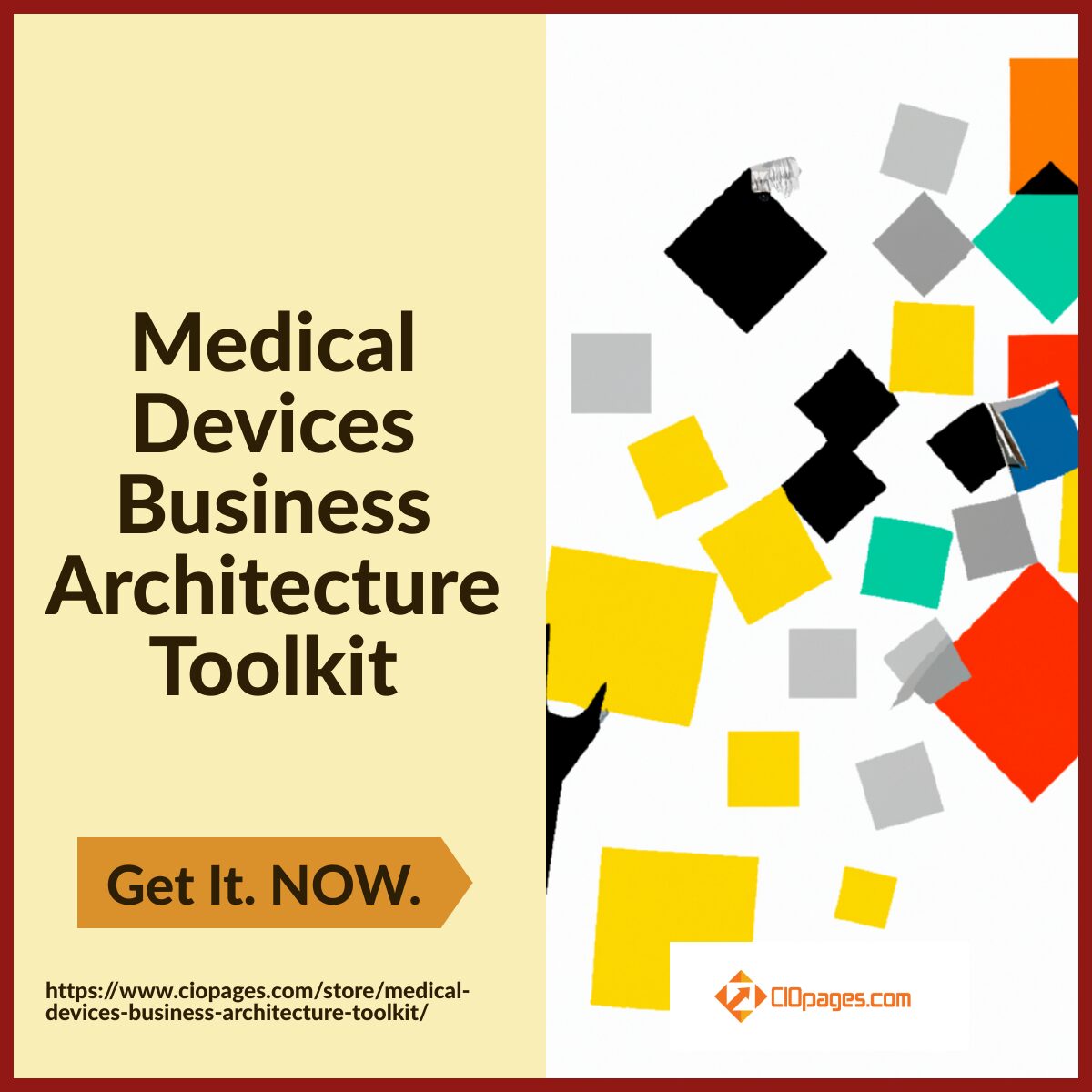
Business Architecture in the Medical Devices Industry.
The medical devices industry is crucial in advancing healthcare by designing, developing, and producing medical equipment and technologies. Spanning a wide array of products, the sector encompasses everything from surgical instruments and diagnostic equipment to patient monitoring systems and prosthetic devices. This article delves into the diverse subsectors within the industry, profiles leading companies, and examines trends, strengths, weaknesses, opportunities, and threats. It also explores the value chain, drivers of transformation, emerging technologies, and the strategic imperative of business architecture for medical device makers.
Major Companies and Industry Statistics
Prominent medical device manufacturing players include Johnson & Johnson, Medtronic, GE Healthcare, Siemens Healthineers, and Philips Healthcare. These companies have established themselves as market leaders by continuously innovating, offering a wide range of products and services, and maintaining strong distribution networks. In 2021, the global medical device market was valued at over $450 billion, with a projected compound annual growth rate (CAGR) of approximately 5% from 2021 to 2028.
Current State, Trends, and Future Outlook
The medical devices industry is experiencing rapid growth due to an aging global population, the rising prevalence of chronic diseases, and the growing demand for advanced healthcare solutions. Key trends shaping the industry include personalized medicine, miniaturization of devices, wearable medical technologies, and the increasing importance of data analytics and artificial intelligence (AI) in diagnostics and treatment. As a result, the future outlook for the sector is positive, with market growth anticipated to remain strong, driven by continuous technological advancements and increasing investments in research and development.
SWOT Analysis for a Medical Device Company
Strengths:
- Innovative product portfolio addressing diverse healthcare needs
- Established brand reputation and solid customer base
- Efficient supply chain and distribution networks
Weaknesses:
- High costs of research, development, and regulatory compliance
- Dependence on regulatory approvals and reimbursement policies
- Potential for product recalls and liability claims
Opportunities:
- Growth in emerging markets, particularly in Asia and Latin America
- Collaborations with healthcare providers and technology companies
- Adoption of digital health solutions and telemedicine
Threats:
- Intense competition and pricing pressures
- Changing regulations and reimbursement policies
- Cybersecurity risks and potential for data breaches
Value Chain of a Medical Device Maker
The value chain of a medical device maker includes the following:
- Research and development: Design and engineering of medical devices, incorporating new technologies and innovations.
- Regulatory compliance: Ensuring products meet industry standards, regulations, and certifications.
- Manufacturing: Production and assembly of instruments, maintaining quality and efficiency.
- Distribution: Supply chain management, shipping, and logistics to deliver products to customers.
- Sales and marketing: Establish and maintain a market presence through promotion and sales efforts.
- Customer support: After-sales services, including technical support, maintenance, and training.
Medical Device Makers: Drivers of Transformation
Internal factors:
- Pressure to innovate and stay ahead of competitors
- Need for cost reduction and operational efficiency
- Demands for improved product quality and patient safety
- Corporate social responsibility initiatives and sustainable practices
External factors:
- Regulatory and reimbursement policy changes
- Technological advancements and disruptive innovations
- Shifts in consumer preferences and healthcare delivery models
- Geopolitical and economic factors influencing global trade and markets
Emerging Technologies
Technologies such as AI, robotics, the Internet of Things (IoT), and 3D printing are revolutionizing the medical devices space. AI and machine learning are improving diagnostic accuracy, optimizing surgical procedures, and enabling personalized medicine. Robotics enables more precise and minimally invasive surgeries, while IoT-connected devices enhance patient monitoring and data collection. Meanwhile, 3D printing has created new possibilities for custom prosthetics and medical implants.
Specific use cases across the industry value chain include:
- AI-driven imaging analysis, enabling more accurate diagnoses and treatment planning
- Robotic-assisted surgery, reducing human error and improving patient outcomes
- IoT-enabled remote monitoring devices allow continuous tracking of patient health and faster interventions
- 3D-printed prosthetics and implants, providing personalized and cost-effective solutions
Business Architecture in the Medical Devices Industry
Business architecture has emerged as a strategic imperative for medical device manufacturers in an industry marked by rapid technological advancements, increasing regulatory scrutiny, and evolving customer demands. It provides a structured approach to aligning business processes, information systems, and organizational capabilities to support innovation, operational efficiency, and compliance.
Business architecture helps medical device makers in their transformation by:
- Streamlining business processes: Identifying and optimizing key processes to reduce complexity, improve agility, and enhance collaboration.
- Enhancing decision-making: Providing insights and visibility into data and metrics, enabling better-informed strategic and operational decisions.
- Ensuring regulatory compliance: Aligning processes, data, and technology with regulatory requirements to reduce risk and maintain market access.
- Facilitating innovation: Establishing a flexible and scalable foundation for incorporating new technologies and addressing emerging healthcare needs.
In conclusion, the medical devices manufacturing sector plays a critical role in global healthcare, continuously evolving to meet the needs of an aging population, chronic diseases, and the demand for advanced healthcare solutions. Understanding the industry’s trends, challenges, and opportunities is essential for companies seeking to navigate the complex landscape and maintain a competitive edge. By leveraging business architecture and embracing emerging technologies, medical device manufacturers can successfully navigate their transformation journey and drive growth in the sector.



